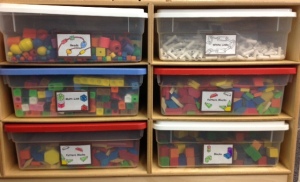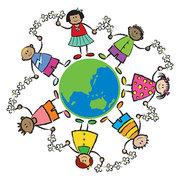 Much to our surprise, last Friday we passed a mini-milestone of 30 posts on this blog.
Much to our surprise, last Friday we passed a mini-milestone of 30 posts on this blog.
We’ve had a few friends and colleagues make comments or ask questions about The Self-Regulated Teacher such as, “It must be so much work having to think of something to write every week,” and “Where do you find the time?” Although it’s not hard to think of ideas for writing (every day is a new adventure in the Kindergarten-there is no shortage of something to share) and time is always at a premium (we’re opportunists so we talk and write whenever we can, although we typically edit our work and post on Fridays and Sundays) we thought today we would reflect on how we started this website.
It was this time last year, at the end of April 2014, that we started thinking about how we could better communicate the wealth of information we have about the Kindergarten program to our classroom parents. The week prior we had just hosted our school’s Welcome to Kindergarten event for all of the incoming Kindergarten students (our current group of children right now) and we were considering plans for the next school year.
We’ve talked about writing a handbook for parents since we started teaching Kindergarten nine years ago. Although we try to cover as much ground as possible through the Curriculum Overviews and Curriculum Nights each fall, we often found ourselves rushing through our presentations and then feeling we hadn’t quite answered everybody’s questions to their satisfaction.
There is just so much information for first-time parents in the school system, and families new to Ridgeview, and Canada, to learn, digest and assimilate, particularly with the full-day Kindergarten program. We remember ourselves how completely overwhelming it is when your children start school, and we’re teachers with the inside track! Sometimes you just want to be able to take a little bit of information at a time, reflect, revisit, reflect again and then you can move on to the next thing.
We’re very fortunate that one of our best friends, Cari Wilson, is not only a Ridgeview Grade 7 teacher, but the West Vancouver District Innovation Support Leader (@kayakcari). Cari had been encouraging us to switch from our hand-printed weekly classroom newsletter to an online version. Christy and I were certain that a digital version of the Kindergarten handbook would be our chosen format. From there the three of us decided we would actually create a Kindergarten website to house the handbook and the newsletters, and Cari would help us to build it and give us technical support until we were ready to manage it independently (sounds a lot like Kindergarten).
But what to call it?
Self-regulation is the cornerstore of our Kindergarten program at Ridgeview. We have been using The Zones of Regulation (2011) by Leah Kuypers for the past three years, and influenced by Stuart Shankar and his writing in Calm, Alert, and Learning (2013). From these resources, we learned that being self-regulated ourselves, and being able to articulate our emotions to model what we were doing to self-regulate our own behaviour in class, would serve as a positive example for our students. We would be self-regulated teachers; thus, The Self-Regulated Teacher. It took another eight months of talking, thinking and planning before our first post.
The Self-Regulated Teacher’s primary purpose is as a resource for parents about everything to do with Kindergarten; we are very aware that we write for our intended audience, the Ridgeview Kindergarten parent group, new and seasoned.
Our Kindergarten Handbook holds all the important information about how we do things in Kindergarten at Ridgeview. It will always be changing as we make new additions to keep it current, depending upon how each school year unfolds.
We started a blog as well to share about what’s happening in our classrooms and at school, as well as writing about the issues and topics important in Kindergarten including self-regulation, early literacy, play and social responsibility.
We inform our Ridgeview parent group that we have new posts on our blog through “Remind,” the app for teachers to remind their students and parents about classroom events and homework. Our original intention was to have “Remind” replace the classroom newsletter but we found there were not enough characters for each “remind” to write descriptively about our classes, so that is why we write the blog.
As far as the Friday classroom newsletter is concerned, we’re still writing it on paper and will do so until the end of this school year. We started the newsletter in September, switched to “Remind” in October, and brought it back again when our parent group told us they missed it, and we want to honour their feedback and appreciation.
We are thrilled to be able to share our teaching and classroom experience on The Self-Regulated Teacher as a result of today’s technology. Through social media and the support of others, we’ve been able to reach farther afield beyond that of our parent group to include teaching colleagues, teacher candidates, administrators and other interested parents. We are delighted and so appreciative to those of you who have happened to stop by.





























